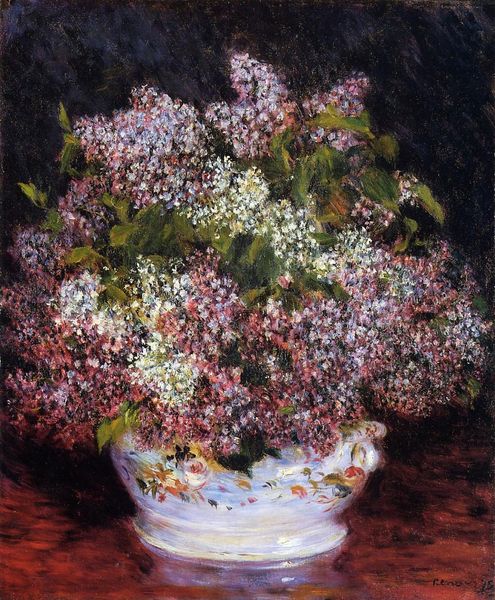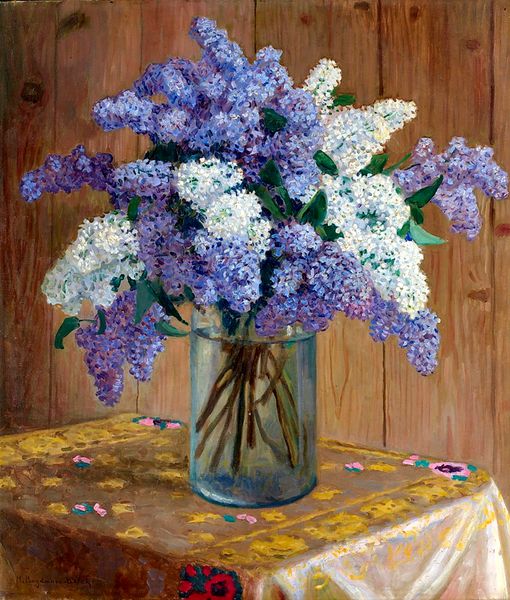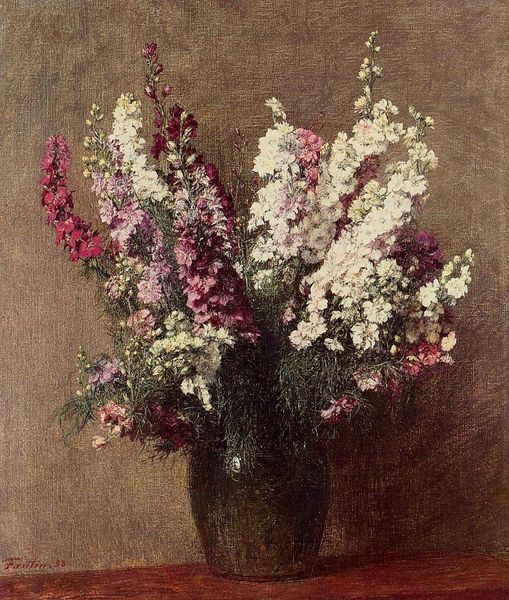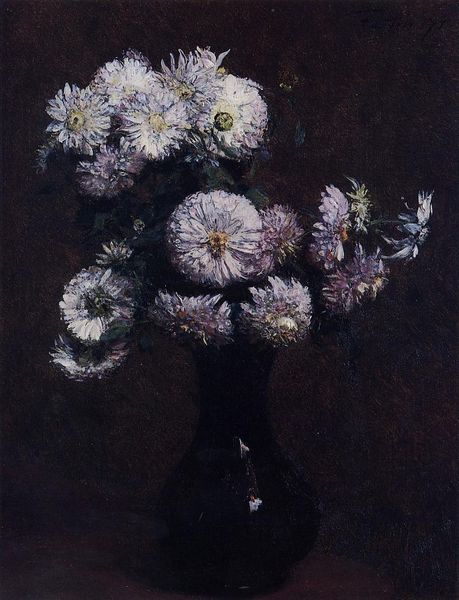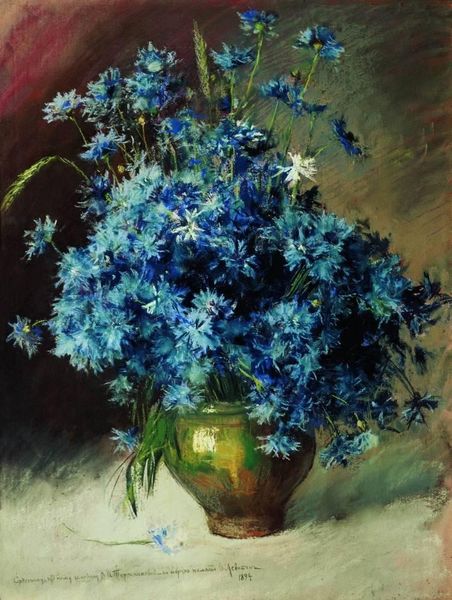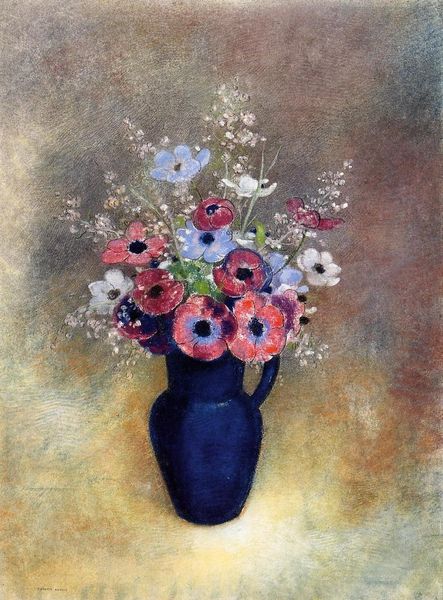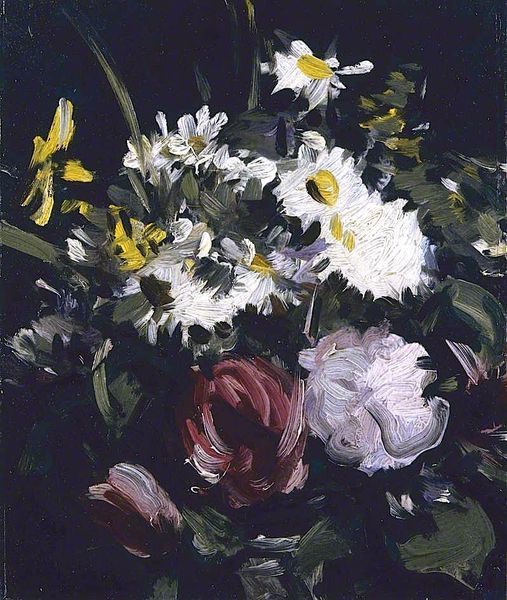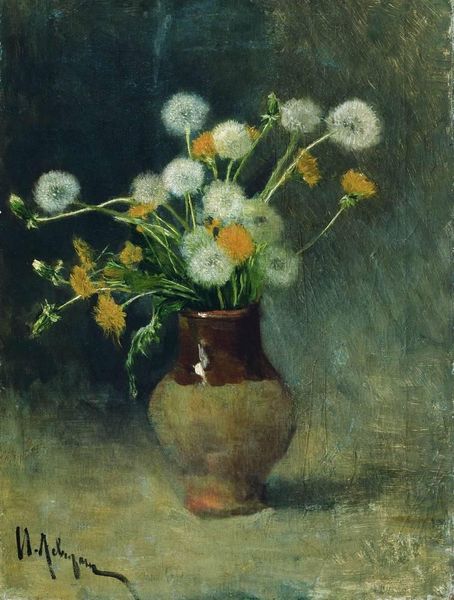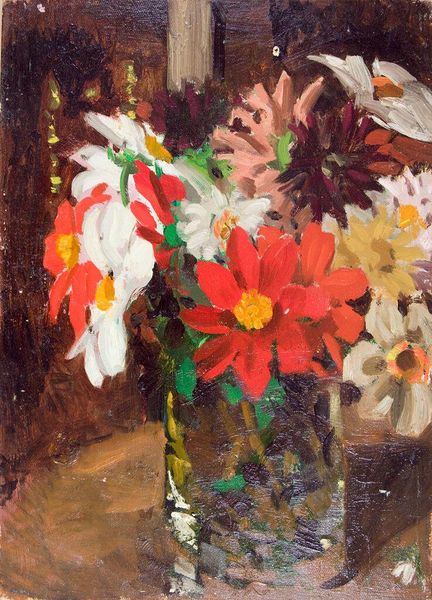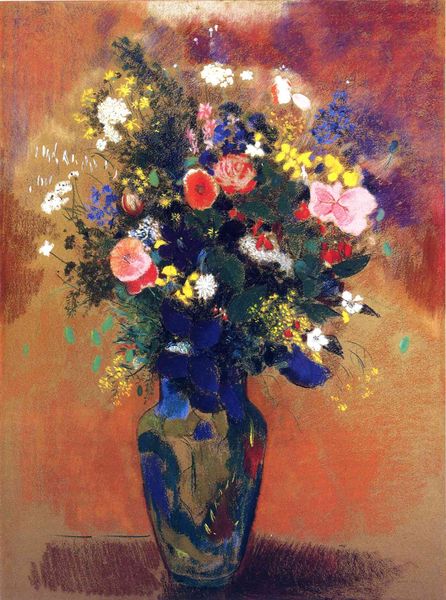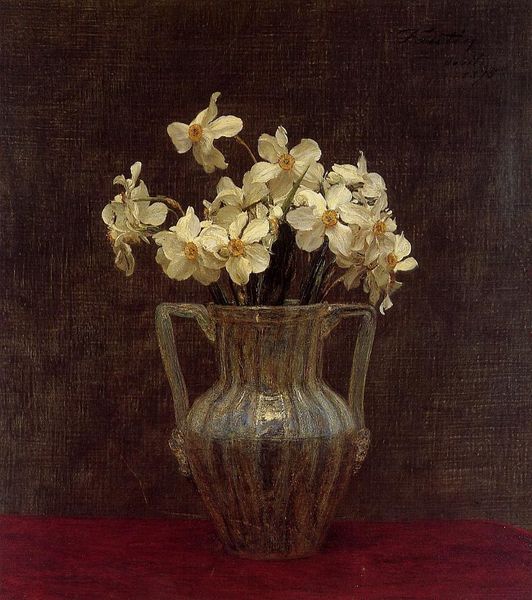
Dimensions: 61.5 x 53 cm
Copyright: Public domain
Editor: This is Isaac Levitan’s "White Lilac" from 1895. It's an oil-on-canvas piece currently residing in the Omsk Regional Museum of Fine Arts. The textures seem really prominent, like you could almost reach out and touch the flowers. How would you interpret the impact of his formal choices? Curator: Observe how the composition emphasizes the contrast between the voluminous, light-filled lilac blossoms and the dark, almost somber background. Notice also the striking interplay of impasto and subtle glazing in rendering both the flowers and the vase. This careful arrangement intensifies the textural contrast and guides the eye, doesn’t it? Editor: It definitely does! The impasto makes the lilacs pop, while the glazing gives depth to the vase. Is the artist trying to convey some sort of message with that contrast? Curator: Perhaps, but I'd first like you to focus on what he has created here through surface, form and color alone. Consider how the restricted palette contributes to the overall mood. Does the limited chromatic range enhance or detract from the impact of the brushwork itself, would you say? Editor: I see what you mean! It amplifies it! Because of that stark contrast, it isolates the viewer, doesn't it? This might also affect our impression of time here. It looks very deliberate now that you pointed it out. The flowers are illuminated against an ambiguous and dark backdrop. Curator: Precisely. This work uses purely formal means to create emotional resonance. Its enduring power resides in that interplay between material and composition. Editor: I see this painting in a totally different light now. Thank you. Curator: Indeed. Close analysis reveals its complexities; appreciating formal decisions can deepen our appreciation for a painting, like this very image, overall.
Comments
No comments
Be the first to comment and join the conversation on the ultimate creative platform.
